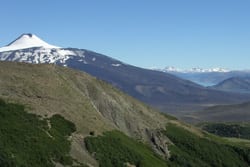“Typical” Typothere Tooth
When a mammal tooth erupts, it has a continuous covering of enamel. However, in many herbivores that eat abrasive foodstuffs, the enamel covering on the surface wears away, exposing the dentine underneath. (Since humans and other primates eat relatively soft foods, we mostly maintain the enamel covering of our teeth throughout our lifetime.) If the […]










